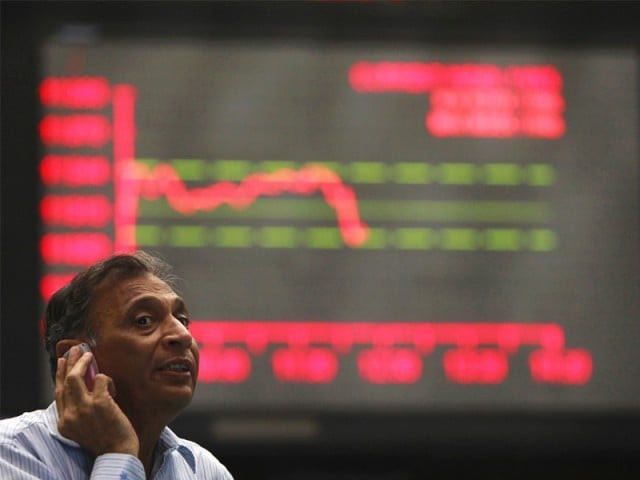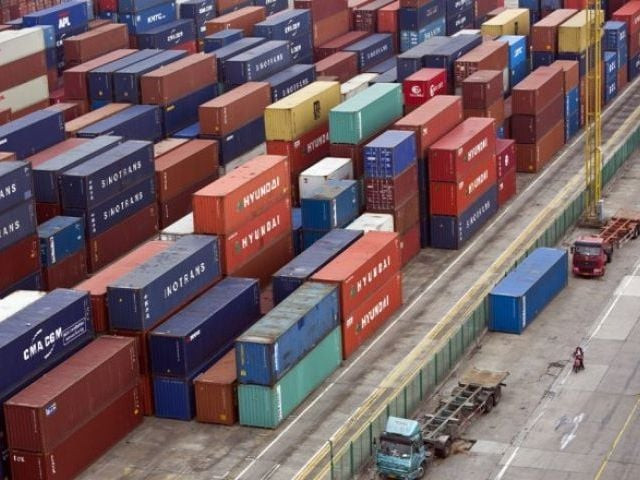Business
Hollywood turns to video games to bring fresh IP to the big screen

Warner Bros. | Universal Studios | Amazon Prime
Hollywood is finally leveling up.
For decades, studios have tried to capitalize on the financial success and cultural relevance of video games, but it’s only been in the past few years that things have clicked.
With the box office achievements of Universal’s “The Super Mario Bros. Movie” and Warner Bros.’ “A Minecraft Movie,” alongside television hits like Amazon Prime Video’s “Fallout” and HBO’s “The Last of Us,” Hollywood has doubled down on its investment in content based on video game franchises and related intellectual property.
“Adaptations of popular games used to be met with a high degree of cynicism and creative misfires, but recent blockbusters and commercial hits have reversed the curse,” said Shawn Robbins, director of analytics at Fandango and founder of Box Office Theory.
Just this week, Paramount announced it would develop a live-action Call of Duty movie and distribute the latest Street Fighter adaptation as part of a three-year distribution deal with Legendary. Also on the development docket are features based on “Elden Ring,” “Helldivers,” “Horizon Zero Dawn” and “The Legend of Zelda.”
On the television side, treatments for Tomb Raider, God of War, Mass Effect and Assassin’s Creed are in the works.
“Video game movies and TV shows are not new, but they’re certainly getting a better volume and they’re getting better,” said Alicia Reese, analyst at Wedbush.
Start screen
The first video game adaptation to hit theaters was 1993’s “Super Mario Brothers.” The live-action feature based on the hit Nintendo property tallied $20.9 million domestically at the time and was widely panned by critics.
For the next two decades, Hollywood managed to make enough back on production budgets that studios kept justifying future adaptations, but there always seemed to be something lost in translation between the game controller and the theater.
Between 1993 and 2018, only three video game-based films generated more than $100 million at the domestic box office — 2001’s “Lara Croft: Tomb Raider,” 2016’s “The Angry Birds Movie” and 2018’s “Rampage,” according to data from Comscore.
During this same period, not a single video game movie generated a “fresh” rating from review aggregator Rotten Tomatoes. The site’s rating has become a benchmark over the past two decades, as moviegoers often consult the website before they decide to go see a film.
Rotten Tomatoes aggregates reviews from major publications and reputable blogs and determines what percentage of those reviews were positive versus negative. If at least 60% of a film’s reviews are positive, it will receive a red tomato, which is considered “fresh.” If it gets less than 60%, it is given a green splat.
Next level
And then something shifted in 2019.
Warner Bro.’s “Pokémon Detective Pikachu” not only hauled in $144 million domestically, it scored a 68% “fresh” rating. The film became the second-highest video game adaptation ever with $433.5 million in global receipts. Universal’s 2016 “Warcraft” was the only film with higher ticket sales at the time, with $433.6 million worldwide; however, only $47.3 million of that came from domestic audiences, Comscore reported.
Ben Schwartz voices Sonic in Paramount Pictures’ “Sonic the Hedgehog.”
Paramount Pictures
A month before pandemic shutdowns, Paramount’s “Sonic the Hedgehog” hit theaters, earning a 64% “fresh” rating and zapping up $144 million domestically and $319 million globally.
Its run was cut short, but audience turnout and enthusiasm brought two more theatrical Sonic films and a spin-off streaming show called “Knuckles.” The franchise has now generated more than $1 billion at the global box office since 2019 and a fourth film is due out in 2027.
The franchise paved the way for “The Super Mario Bros. Movie,” which debuted in April 2023 and shattered box office records for video game adaptations. It generated $574 million domestically, the most of any video game film ever, and more than $1.3 billion globally, the first and only film of the genre to reach that feat.
Another big hit for the industry was 2025’s “A Minecraft Movie,” which topped $423 million in the U.S. and Canada and $957 million at the global box office.
Jack Black, Jason Momoa, and Sebastian Hansen as seen in Warner Bros. and Legendary Entertainment’s “A Minecraft Movie.”
Warner Bros.
While critical responses to “Super Mario” and “Minecraft” were lukewarm — 59% and 48%, respectively — audience scores were much stronger at 95% and 85%, respectively.
“If it weren’t for ‘Minecraft,’ 2025 year-to-date would be looking, honestly, pretty dismal,” said Doug Creutz, an analyst at TD Cowen. “‘Minecraft’ really helped at the time of the year, April, when it’s usually a little quieter.”
Fueling fandoms
Video game films have hit their stride as technological advancements in computer-generated imagery made creating the worlds within these digital spaces easier and also more realistic.
Previous video game adaptations focused more on worldbuilding than character development, Toby Ascher, who acquired the rights to Sonic and produced the film franchise, told CNBC back in March when discussing how Paramount handled the production of the first Sonic film.
Now, that worldbuilding is easier, so studio creatives can focus on the story they are bringing to the big screen, said industry analyst David Poland.
“‘Minecraft, like the world of it, almost becomes a background,” Poland said. “Then you’re able to tell these stories where the obsession is not getting the background correct, but getting a story that people actually engage with. So, in some ways, I think the technology has allowed them to get away from the games to a certain extent, and get to things that people connect with while also maintaining the integrity of the games in the first place.”
At the same time, the kids who grew up playing video games have now become adults and are the ones making these films.
“I don’t think anyone in town really thought making a Sonic movie was a good idea,” Ascher said back in March. “But, I think our strategy was that we had grown up with these games. We’ve grown up with these characters, and we wanted to treat them like any other character. We wanted to give them real emotional arcs, and real emotional stories where you could relate to them.”
Paramount’s Chairman and CEO David Ellison also touted his fandom in announcing the company’s partnership with Activision to bring Call of Duty to the big screen.
“As a lifelong fan of Call of Duty this is truly a dream come true,” Ellison said. “From the first Allied campaigns in the original Call of Duty, through Modern Warfare and Black Ops, I’ve spent countless hours playing this franchise that I absolutely love.”
Chris Pratt and Charlie Day voice Mario and Luigi, respectively, in Universal and Illumination’s “The Super Mario Bros. Movie.”
Universal
The Entertainment Software Association estimates that more than 205 million Americans play video games, with the highest concentration of gamers coming from Gen Alpha, Gen Z and Millennials. That is a massive audience of people who have spent a lot of time invested in this kind of IP, Poland noted.
“If movie studios and theater owners want to meet young audiences where they are and have them become a consistent part of the future of moviegoing, the video game world is unsurpassed in untapped potential,” Robbins said.
“The additional upside is that the non-gamer audience could show up for these films and discover them for the first time,” he added. “Quality will always be king, though, so care must be taken and audiences must be heard. Ultimately, engaging Gens Z and Alpha directly through the communities of social influencers and content creators could pay tremendous dividends for the movie business.”
Drawing younger generations to cinemas is key when it comes to keeping the box office booming. Ultimately, analysts don’t see video game movies growing the industry exponentially, but rather acting as a replacement for genres that are not drawing in audiences and luring in a younger demographic and training them to be more avid moviegoers.
“As a genre, the video game adaptation represents a new frontier and studios may be looking to such future projects to fill the void that has been left by some inconsistent performances by films from the superhero category that historically has been heavily relied upon to be a key pillar of the box office,” said Paul Dergarabedian, senior media analyst at Comscore. “A virtual treasure trove of beloved brands, characters, situations, and stories await producers and filmmakers who are hoping to further cash in on video game fever.”
Disclosure: Comcast is the parent company of NBCUniversal and CNBC. NBCUniversal owns Rotten Tomatoes and Fandango.
Business
‘Benchmark for countries’: FATF hails India’s asset recovery efforts; notes ED’s role in returning defrauded funds – The Times of India

NEW DELHI: The Financial Action Task Force (FATF) acknowledged India’s efforts in recovering public assets lost to financial crimes, highlighting a money laundering case where land confiscated by the Enforcement Directorate (ED) was identified for the construction of a new airport that would serve the public.The acknowledgment comes in FATF’s latest 340-page report titled ‘Asset Recovery Guidance and Best Practices,’ cited by PTI, which documents how countries can strengthen their systems to trace, freeze, manage and return proceeds of crime. The Paris-based FATF sets global standards for combating money laundering and terrorist financing.“The report outlines practical measures for policy makers and practitioners to identify, trace, freeze, manage, confiscate and return assets derived from criminal activity…” it said. “The guidance serves as a benchmark for countries to enhance their national frameworks and align with emerging best practices,” the Enforcement Directorate (ED) said in a statement.The report references several ED investigations involving recovery and restoration of assets to victims. These include the alleged Rose Valley Ponzi scheme, a drug trafficking case where the US sought India’s assistance leading to seizure of Bitcoins worth Rs 130 crore, and coordination between the ED and Andhra Pradesh Police CID to restore Rs 6,000 crore to victims of an alleged investment fraud.Another case cited involves the alleged diversion of public funds in a Maharashtra-based cooperative bank. The ED restored benami assets worth Rs 280 crore to compensate affected account holders after auctioning the properties. According to officials, the report noted that the confiscated properties “have been identified as a site for construction of new airport, to build infrastructure in India for the benefit of society at large”.“The contribution of India and the ED to this global effort has been substantial and widely acknowledged,” the agency said, as quoted by PTI. It added that India’s legal framework under the Prevention of Money Laundering Act (PMLA), along with operational experience, shaped key aspects of the global guidance related to value-based confiscation, provisional attachment and inter-agency coordination.The ED said the inclusion of Indian case studies “underlines the credibility of India’s enforcement mechanisms and the value of its experience in shaping future global standards.”According to FATF, the guidance aims to bring “tangible” improvement in the confiscation and return of criminal assets by enforcement agencies worldwide.
Business
M&S reveals huge cost of cyber-attack which halted online sales

Marks and Spencer’s profits have fallen by more than half, following the major cyber attack it suffered earlier this year.
The hack impacted app and website orders, meaning online home and fashion sales plunged more than 40 per cent when the company had to stop taking orders.
However, the total stated impact so far is significantly lower than the £300m estimate the company gave in May.
M&S said the cost of the attack is set to total around £136m, including about another £34m in the final six months of its financial year, but it was able to recover £100m in its first half through an insurance payout for the hack.
In the aftermath of the attack, M&S announced 12 new food stores would open, including eight by summer 2026. An additional 550 jobs are expected to be created through the expansion.
The retail giant reported its underlying pre-tax profits tumbled 55.4 per cent to £184.1m in the six months to 27 September.
On a reported basis, profits were almost wiped out, plunging to £3.4m from £391.9m a year ago.
The group said sales in its fashion arm dropped by 16.4% as the cyber attack wrought havoc, with sales online down 42.9% and 3.4% lower across its stores.
The high street stalwart stopped all online sales for around six weeks and suffered empty shelves due to disruption to its logistics systems after hackers targeted the business around the Easter weekend.
Customer personal data – which could have included names, email addresses, postal addresses and dates of birth – was also taken by hackers.
Stuart Machin, chief executive of Marks and Spencer, said: “The first half of this year was an extraordinary moment in time for M&S.
“However, the underlying strength of our business and robust financial foundations gave us the resilience to face into the challenge and deal with it. We are now getting back on track.”
He said the group also faced cost increases of more than £50 million from the national insurance hike in April over its first half, but that he expects profits to be “at least in line with last year” in the final six months of its financial year as it ramps up its cost-cutting target to £600 million.
“The retail sector is facing significant headwinds… but there is much within our control and accelerating our cost-reduction programme will help to mitigate this,” he added.
In May, Mr Machin said the attack, which was caused by “human error”, was expected to cost the company around £300 million, before insurance claims or cost reductions to offset the impact.
M&S reported a surge in activity after its clothing, home and beauty sales returned online but some competitors such as Next saw market share grow during the period of disruption, suggesting some online shoppers went elsewhere.
Additional reporting by PA
Business
M&S profits halved after cyber hack left shelves empty and hit sales

M&S profits halved after it was hit by a cyber-attack which left shoppers unable to buy online from the company for months.
The British high street chain’s boss said the April attack was “an extraordinary moment in time” as it revealed it made £184m adjusted profit before tax for the first half of the year, compared with £413m the year prior.
As well as disrupting its online business, the hack affected the company in-store too, leaving some shelves bare in the weeks after M&S was targeted.
M&S said it had received £100m of insurance money related to combating the cyber-attack, around the amount which the incident had cost it so far, though it expects further costs in the coming months.
The fashion and food company was forced to suspend online orders for almost two months, with click and collect suspended for almost four months.
Revealing its financial figures for the six months to September, M&S said “the underlying strength” of the chain meant it was “getting back on track” and expected full-year profits to be in-line with last year.
One analyst told BBC’s Today programme that it was reassuring that the main part of M&S’s business, homewares and fashion, only saw sales decline around 16%.
“Given that they were offline for most of the trading period and really only came back online for their click and collect in August, it’s pretty, pretty resilient,” said Judith MacKenzie, head of Downing Fund Managers.
She said it was “outstanding” that its food sales were up 7.8% over that time despite it being “a pretty horrendous period” for the company.
The fact that costs related to the attack were lower than expected was positive, said Lucy Rumbold, equity research analyst at Quilter.
M&S had earlier estimated that the attack would cost it around £300m.
On a call after the results, chief executive Stuart Machin said: “in May, we anticipated the material impact of the incident on group operating profit to be around £300m this financial year, and we are broadly in line with that”.
He said there were costs from managing the impact, including more IT staffing, and increased food wastage as the firm switched to manual processing during the cyber attack.
Ms Rumbold said there was a view from investors that the disruption caused by the hack “was a one-off”.
“Normal trading can therefore resume and the positive story M&S had going prior to the cyber-attack remains in place.”
M&S said in the second half of the year it forecast profits would recover to the levels seen in 2024, “as the residual effects of the incident continue to reduce in the coming months.”
Mr Machin said the firm was looking forward to a profitable Christmas period, and said sales were going well of its much-loved rose mulled wine, and men’s washable tuxedos.
While profits at M&S tumbled, other retailers have seen a boost in sales as people turned to them for shopping after the cyber attack.
Next continued to see sales overperform, with its latest results in October seeing a 10.5% increase in sales. However, that was not as good as earlier in the year when it had seen “exceptional performance” in the immediate aftermath of the M&S cyber attack.
-

 Tech1 week ago
Tech1 week agoOpenAI says a million ChatGPT users talk about suicide
-

 Tech1 week ago
Tech1 week agoUS Ralph Lauren partners with Microsoft for AI shopping experience
-

 Tech1 week ago
Tech1 week agoHow digital technologies can support a circular economy
-

 Sports1 week ago
Sports1 week agoBilly Bob Thornton dishes on Cowboys owner Jerry Jones’ acting prowess after ‘Landman’ cameo
-

 Tech1 week ago
Tech1 week agoAI chatbots are becoming everyday tools for mundane tasks, use data shows
-

 Fashion1 week ago
Fashion1 week agoTaiwan Textile Select showcases sustainable innovation at TITAS 2025
-

 Fashion1 week ago
Fashion1 week agoITMF elects new board at 2025 Yogyakarta conference
-

 Tech1 week ago
Tech1 week agoHere’s How Many People May Use ChatGPT During a Mental Health Crisis Each Week












